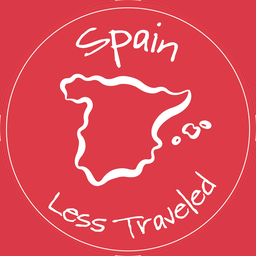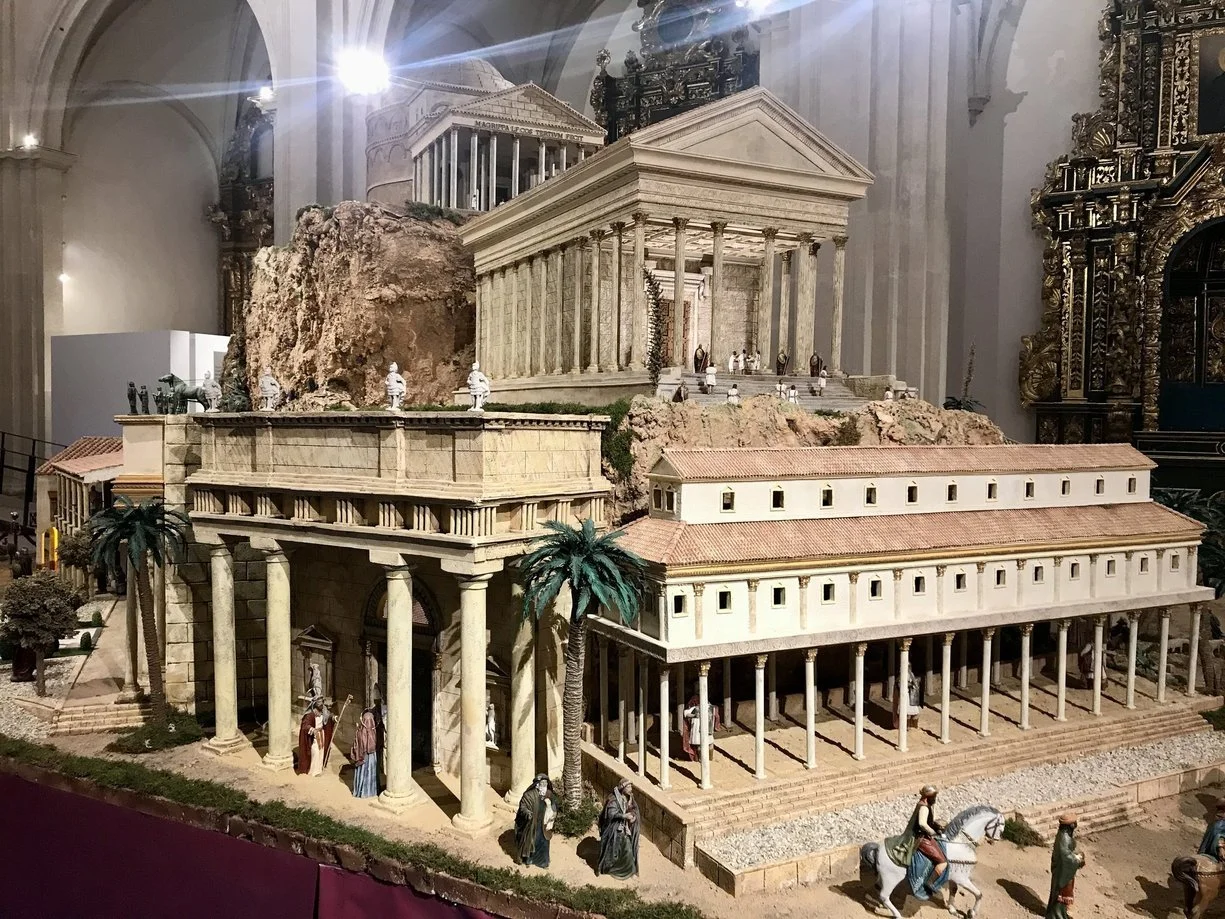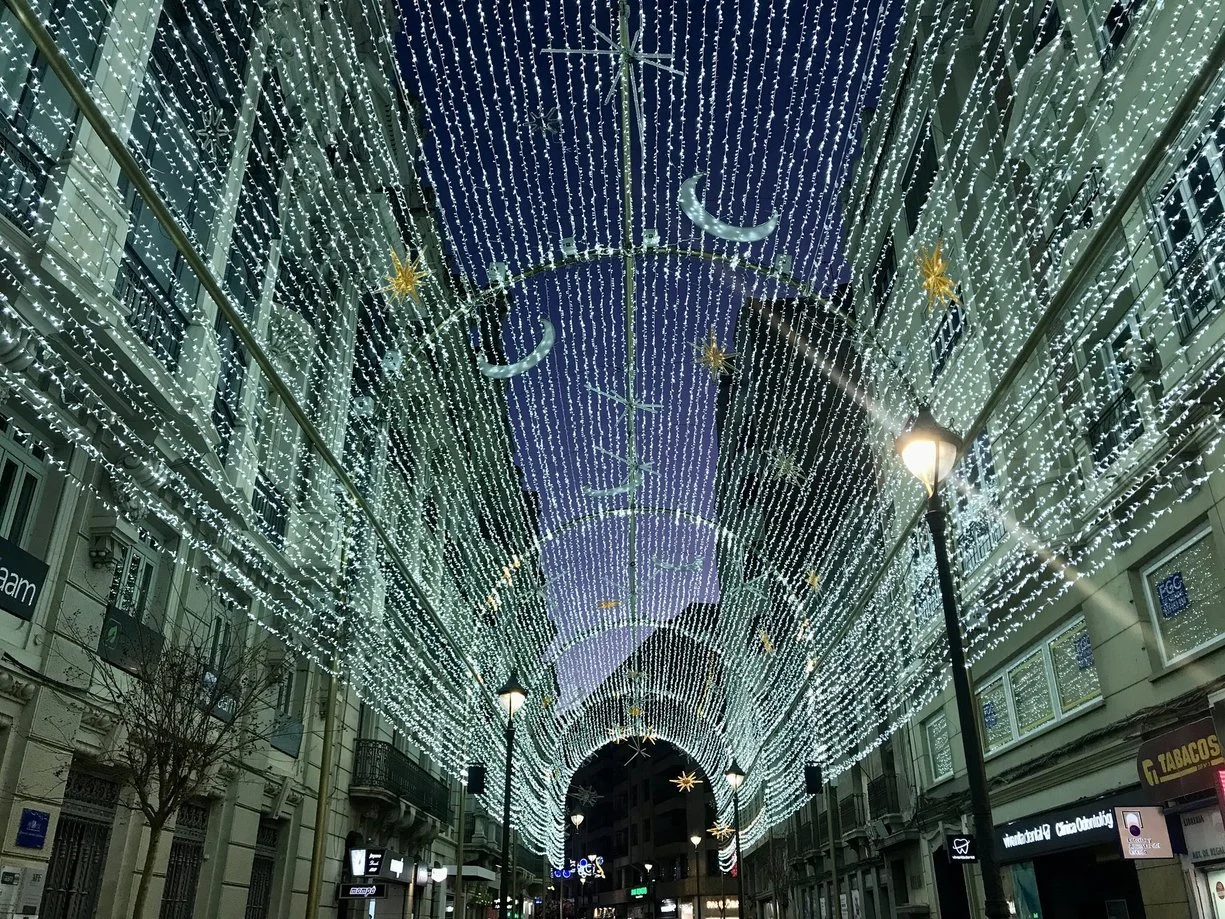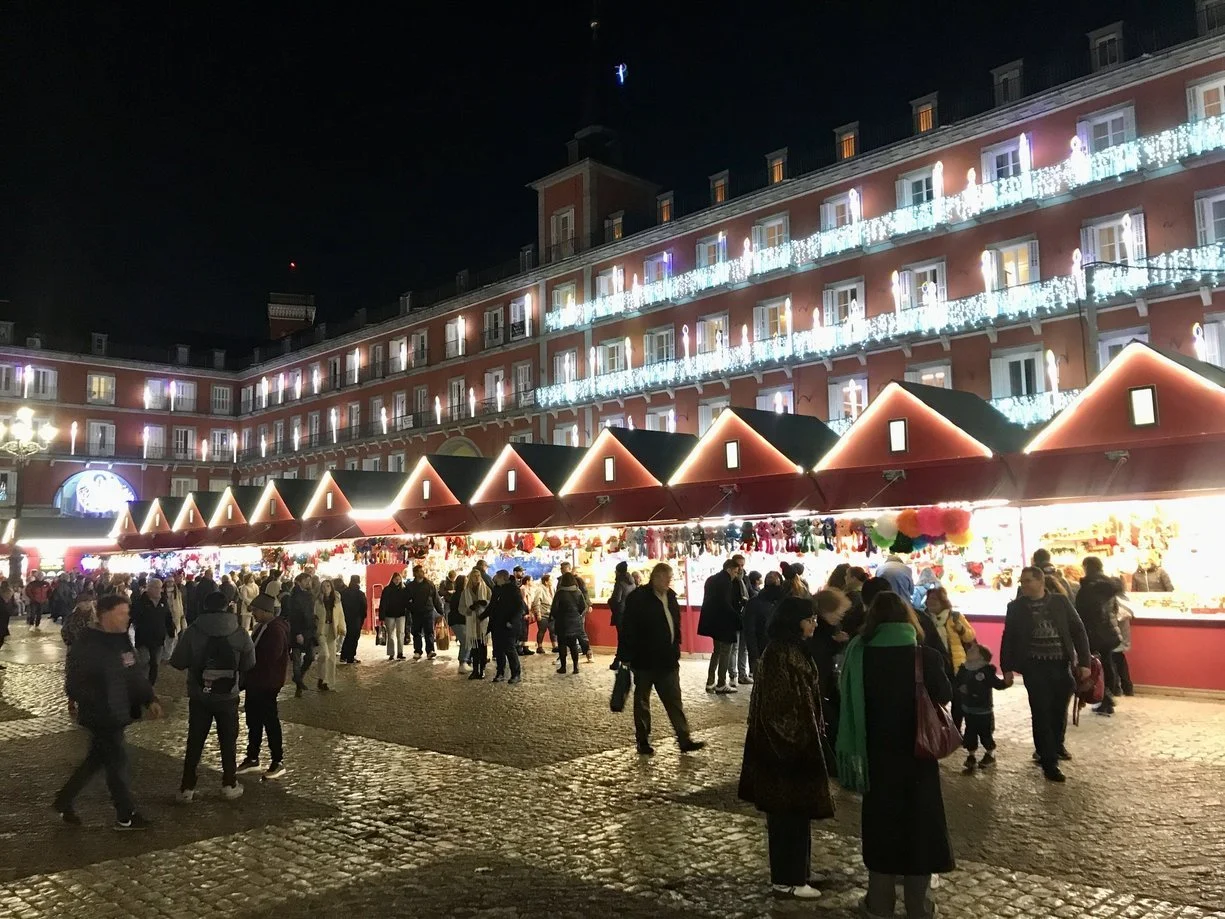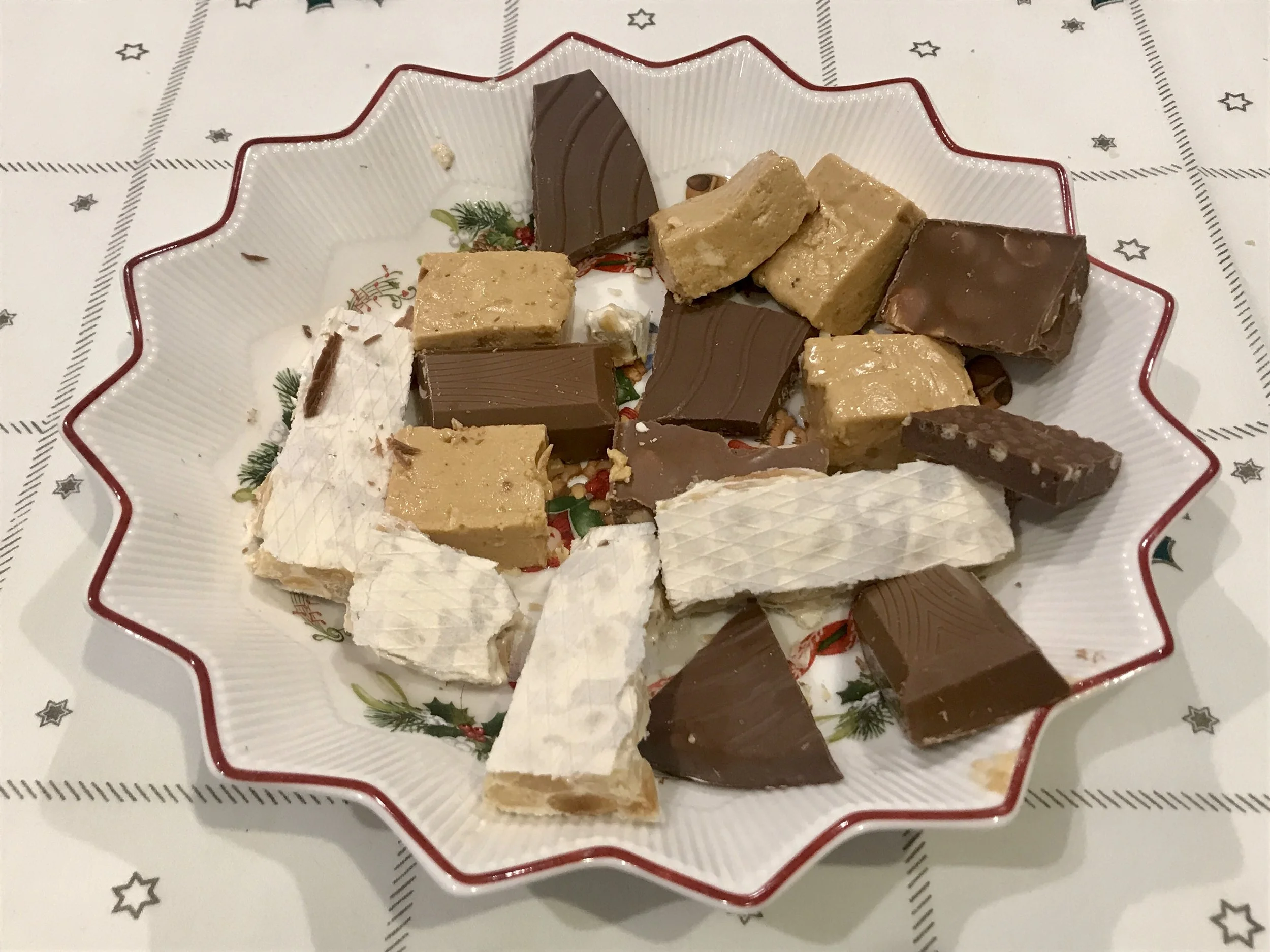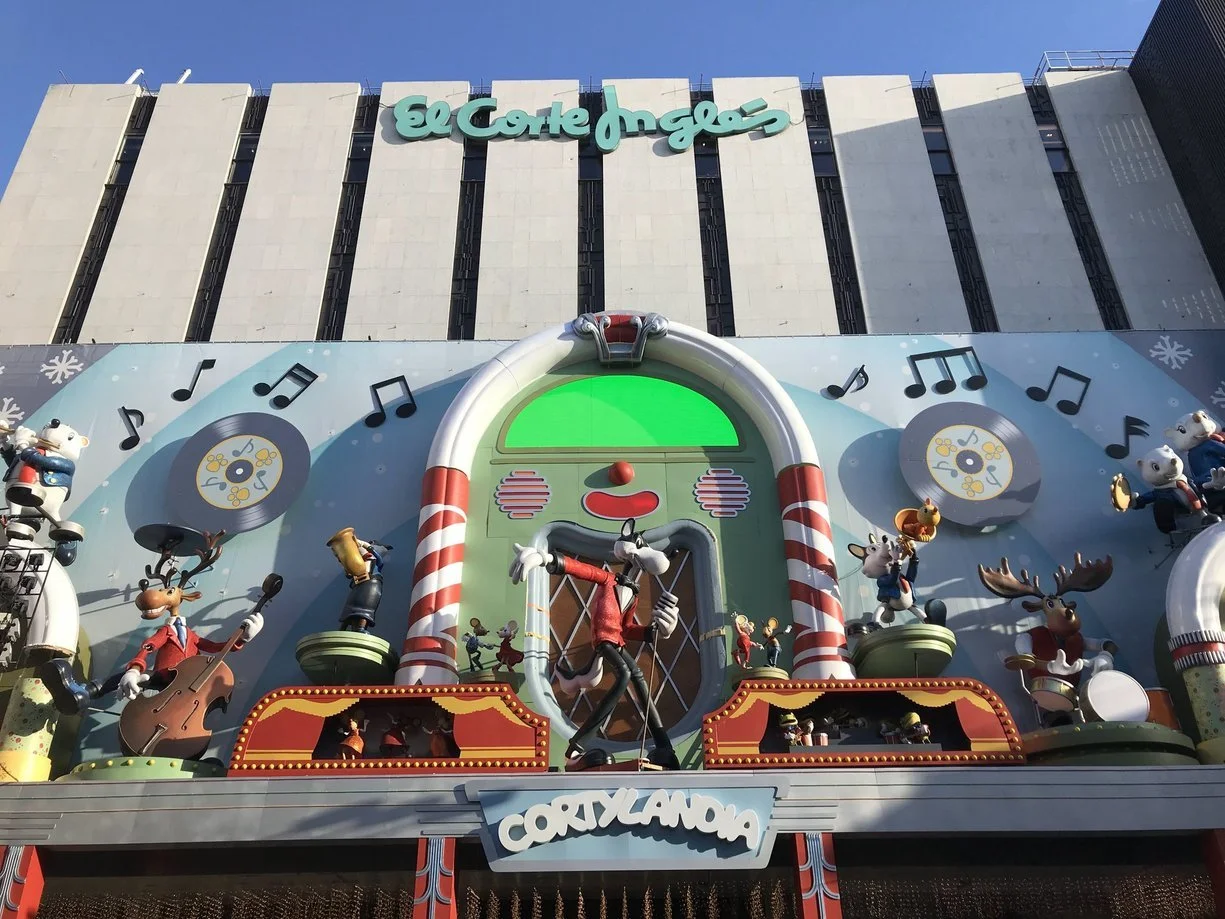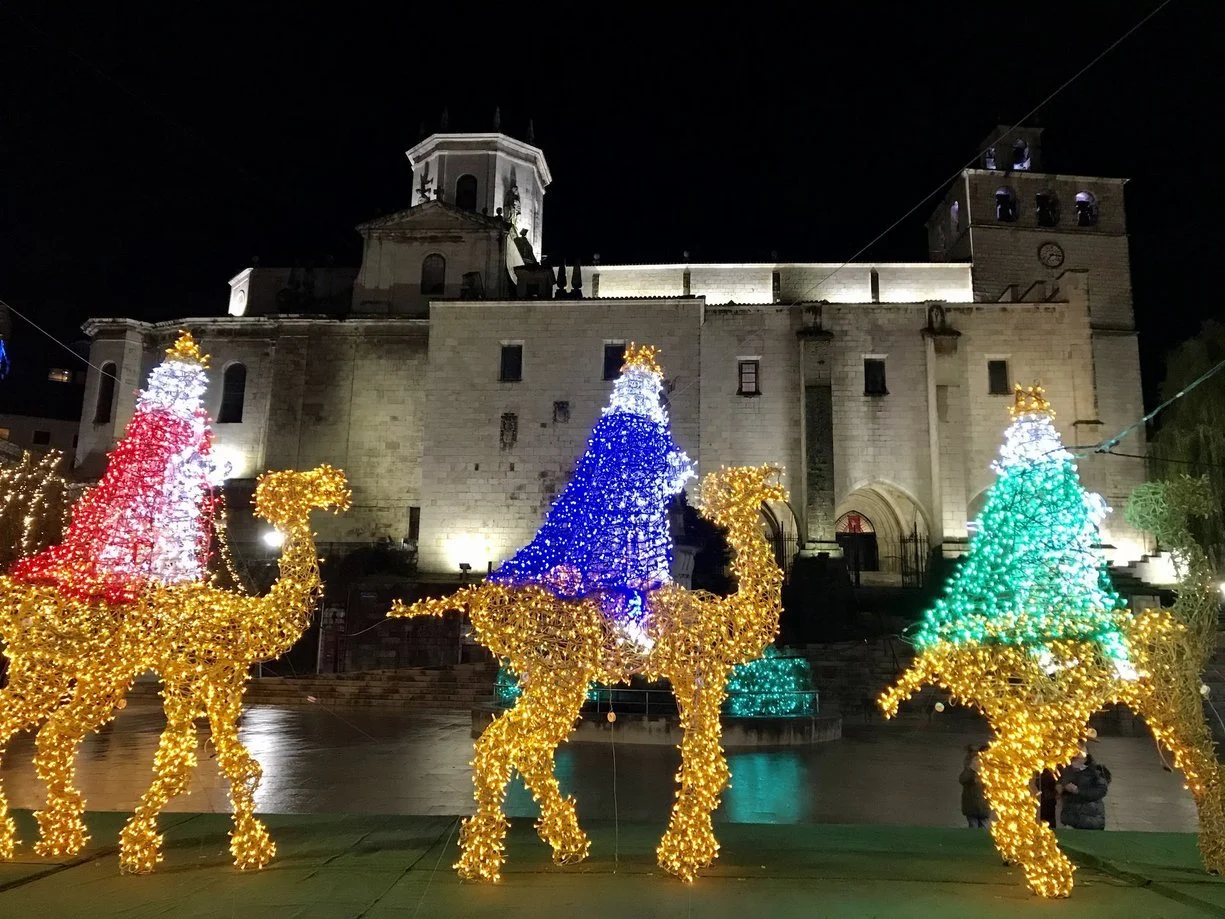Enjoying the Holidays in Spain
Expert travel tips!
Originally published 01 October 2025
All images are courtesy of the Spain Less Traveled team, unless otherwise stated.
This post contains some affiliate links. If you click on them and book a tour or experience, we may earn a small commission at no extra cost to you. We only link what we truly use and love. Thank you for supporting our work through these links. If you'd like access to our handpicked recommendations just for you—including private tours and specific guides, exclusively for our clients—you’ll want to book one of our professional Spain travel planning services.
A word about holidays in Spain
The corner of Alcalá and Sevilla streets is one of the most beautiful places in Madrid during the holidays.
Something to consider about holidays in Spain: Spain is a predominantly catholic country, so the holidays here are basically Christmas. Of course there are Jewish, Muslim and African communities in Spain, but their respective celebrations in those days have almost zero visibility in the country. So we’ll go over those Catholic traditions and others more secular.
Timing of the Holidays in Spain
Holidays officially start on the last Thursday of November, when most city lights start, and ends on January 6th, the Three Kings Day. You may see Christmas decorations before those dates though.
The holidays traditions in Spain
There are a lot of holidays traditions in Spain. As we said, most have a Catholic origin and purpose, but others are for everybody. And if you want to experience most of them, we would love to help plan your holidays trip to Spain!
Main celebrations
The first celebrations of the holidays are the company dinners. During all the month of December, restaurants are packed with large groups of co-workers having dinner and fun together, and possibly too many drinks. If you are visiting Spain during the holidays, make sure you have your dinner reservations well in advance.
The most important family celebration is “Cena de Nochebuena”, or Christmas Eve dinner (December 24th). This is when all familes gather together and nobody wants to miss it. That’s why it’s very difficult to find a restaurant open that night, as mostly everybody is with their families.
“Comida de Navidad”, or Christmas Day lunch (December 25th) is a less important event, but since the family is already reunited and there is plenty of leftover food, why not continue the celebration?
In Catalonia, the lunch on “Sant Esteve”, or St Stephen’s day (December 26th) is very important too, even more than the Christmas day lunch.
“Nochevieja”, or New Year’s Eve is a more public event. A lot of people go to dinners in restaurants or hotels, followed by a “cotillón”, that means drinking and dancing until morning. Others have dinner at home and then go out for the party.
“Belenes” and decorating the house.
“Belenes” in Murcia’s churches reach epic proportions worthy of Cecil B. DeMille
“Belenes” or Nativity scenes are representations of the birth of Christ, and they have a long tradition not just in Spain, but in other Catholic countries. The origin of this tradition was in 13th century Italy, when St Francis of Assisi organized a nativity scene using real people and animals in a cave. If you can attend a living “belén” representation in Spain during the holidays, mostly you will just see small figurines. “Belén” is the Spanish word for Bethlehem.
Most houses in Spain put together a “belén” during Christmas, with many different sizes and styles. The predominant one is the Napolitan style, with Baroque figurines. But you can find modern, regional and many other styles.
Not just houses, also public institutions, churches, hospitals, schools and even shopping malls put together “belenes”, and visiting them is a tradition. For instance, the “Belén napolitano” in Madrid’s Palacio Real is a must-see if you are in the city. Or if you are in Murcia, all churches have huge and impressive “belenes”.
One funny tradition is the “Caganer” in Catalonia. Most “belenes” in Spain have figurines of shepherds and villagers doing different chores around the manger, but in Catalonia they add a figurine of a kid pooping in a corner. The tradition has evolved and now the figurine is often a celebrity. Discover Catalonia here.
City lights… more is more
Holidays lights are huge even in small cities like Albacete.
City lights are a predominant feature of Spanish holidays. What started as illuminated Christmas trees and garlands has evolved into huge displays that take over complete city centers, and started a fierce competition between cities.
Vigo, has the reputation of having the most Christmas lights. Tourists visit the city by the thousands just to see them.
Madrid, Spain’s capital, has a large display of lights too. Some key areas are Gran Vía, Puerta del Sol, Plaza Mayor, and the main avenues of the Salamanca neighborhood. There is a bus (“Navibus”) that you can take and go under most of the lights in the city. But you need to book it well in advance and be patient, as it’s not very well organized.
In Andalusia, Málaga’s lights can be seen especially along Calle Larios, with a light and music show daily. There is also a spectacular videomapping on the cathedral’s façade and a light show in the Botanical Gardens.
Barcelona’s lights are also spread all over the city, but the main areas are Ramblas, Portal del Angel and Mercat de Sant Antoni. There is also a beautiful light and music display in Hospital de Sant Pau (paid admission). As in Madrid, there is a bus that tours these main areas.
In Seville, the central point for lights is Plaza de San Francisco, with a light and music show every 30 minutes. Also Plaza Nueva and Plaza de la Constitución have great lights. And there is usually “Naturaleza Encendida”, a beautiful set of lights in the gardens of the Alcazar, but you need to book a ticket well in advance, as it sells out.
Christmas markets
The Christmas market in Madrid’s Plaza Mayor.
One important note: Don’t expect Christmas markets in Spain to have a winter wonderland look and feel like in Central and Northern Europe. Christmas markets in Spain are more basic, less elegant, but very funny. The main product they sell is Christmas decorations, including “belén” figurines and sets. You’ll also find wigs and masks, as locals like to wear them (don’t ask us for an explanation), and also small gifts, jewelry, etc. And of course food and drinks.
These are some of the main Christmas markets:
Madrid: The main Christmas market is the one in Plaza Mayor, but there are other good ones in Plaza de España, Paseo de Recoletos, or Plaza de la Luna.
Barcelona: The main market is Santa Lucía, in front of the cathedral, but there are others along Gran Via or in front of the Sagrada Familia church. Read our guide: How to visit the Sagrada Familia for exclusive Spain Less Traveled tips.
Sevilla: You can find great markets in Plaza del Triunfo, Alameda de Hércules or in front of El Corte Inglés in Nervión.
Delicious food and sweets
A plate of “turrón” is present in every Spanish house during the Holidays.
As with mostly anything in Spain, Christmas is all about food. All the celebrations revolve around a lunch or a dinner, and there are specific dishes that are only eaten during the holidays. Here is a small selection of dishes:
“Marisco” refers mainly to sheelfish, and it’s a central part of the Christmas celebrations menu. You will find “Langostinos” (shrimps), “langosta” (lobster) or “bogavante” (a variety of lobster) on most tables, either as an entrée or as the main course.
“Pavo” (turkey) is very often the main course of the party, usually with a stuffing of chestnuts and sausages.
“Besugo” (sea bream) or “rape” (anglerfish) are the main fish served on Christmas.
In Catalonia you will find “canelones”, similar to Italian cannelloni, stuffed with meat and paté.
And of course there is a huge array of Chirstmas sweets and treats. The most famous are:
“Turrones” (nougat) is the king of Christmas sweets. It’s basically made with almonds, eggs and honey. There are plenty of varieties, but the most famous are “Alicante” (with full almonds), “Jijona” (with ground almonds), and “Turrón de chocolate” (with full almonds and chocolate). The origin is in Catalonia, but most of the production nowadays is in the Alicante province.
“Polvorones” are soft cookies made with flour, almond, cinnamon and other flavors. The most famous come from Estepa, in the Seville province, and they are so sandy (“polvorón” comes from “polvo”, that means “dust”) that you will be drinking a lot of water afterwards. But hey, they are delicious.
“Mazapán” (marzipan) is also made with almonds, but it’s even more sweet than “turrones” or “polvorones”. You can find them as small figurines, or as large cakes in the shape of an alligator. The best ones come from Toledo, and it’s one of the main souvenirs that you can get in the city all year long.
“Peladillas” are almonds or pine nuts with a white sugar coating. They are beautiful to decorate, but actually everybody is so full from other sweets to actually eat them.
Spain Less Traveled’s food guide.
Cortylandia
Cortylandia next to Puerta del Sol, Madrid
One of the most unique events during the holidays in Spain, and particulary in Madrid, is Cortylandia.
Cortylandia is the Holidays display that Spain’s largest department store chain, El Corte Inglés, puts on the façade of its Preciados store, near Puerta de Sol in Madrid.
The design is different every year, and almost always includes animatronics, lights, video projections and music. Ask anybody in Spain to sing you the Cortylandia theme song and not a single one will fail to do it. And once you hear it, it will be stuck in your brain like forever.
The shows run for the whole season, and last about 15 minutes, but don’t worry, there is a show every 30 minutes or so. Kids and families will gather faithfully to watch it.
Music that you’ll never forget… literally.
Cortylandia’s song is not the only Spanish Christmas song that you will be hearing weeks after your visit, as Spanish Christmas carols (or “villancicos” in Spanish) are very catchy too.
The most famous are “Los peces en el río”, that talks about fish drinking in the river, and “La Marimorena”, that rhymes with Nochebuena.
There are also some beautiful flamenco “villancicos”, that you may hear if you visit Andalucia during the holidays.
For a few years now, Spain has received a lot of immigrants from Venezuela, so “El burrito sabanero”, a famous Venezuelan Christmas song has become hugely popular.
And like eveywhere in the world, you’ll be hearing Mariah Carey’s “All I Want for Chrtimas is You” almost everywhere.
“Lotería de Navidad”, the mother of all lotteries
The lines at Doña Manolita for getting “Lotería de Navidad”.
Another unique Spanish tradition is “Lotería de Navidad” (Christmas Lottery), a tradition more than 200 years old. Spaniards will spend a lot of money buying tickets and shares for this. The prize is not huge: a single 20 euros ticket will give you 400,000 euros at most (if you get “El gordo”, the main prize). But it’s more about the tradition and sharing. Your family and friends will give you shares of their tickets, and co-workers will buy tickets together to share. These shares are called “participaciones” and are a very popular gift.
The draw always takes place on December 22nd, in Madrid’s Teatro Real. It’s broadcasted live on TV, and it takes several hours. There’s not just the main prize, there are almost 1,800 small prizes (“pedrea”) that are announced one by one.
The draw is very peculiar, as there are two lottery drums: one large with every number on a single ball (about 80,000), and one smaller with every prize in a single ball. Small groups of children from Madrid’s San Ildefonso School take out a ball each, and they literally sing the number and the corresponding prize. When they announce the “gordo”, hell breaks loose in the theater and all over the country.
You can buy your tickets everywhere in Spain, but people like to buy them from specific agencies that have a reputation for giving a lot of prizes. “Doña Manolita”, in Madrid, and “La Bruja”, in the Catalan Pyrenees town of Sort, are the most popular. And you can buy tickets online too from everywhere in the world.
For those who lost, there is a second chance: “Lotería del Niño”, that takes place on January 5th, but it’s less spectacular to watch.
Who brings the presents?
Can you recognize all these famous “caganers”?
Traditionally, Christmas presents are brought by the Three Kings (“Los Reyes Magos”) on the morning of January 6th. It’s a beautiful tradition and coherent with the biblical story, but the setback is that school starts the following day and kids have no time to enjoy their toys. So more and more this tradition is being replaced by Papa Noel (the French name for Santa Claus), with a protocol similar to the one in the USA, with presents delivered on Christmas morning.
There are some regional characters that bring the presents in their respective regions. Some are “Olentzero” in the Basque Country, “Apalpador” (or “Pandigueiro”) in Galicia, or “Cagatiò” in Catalonia.
More about Spain Less Traveled’s regions here.
Religious celebrations
Of course there are religious celebrations in Spain during the holidays, but often they are outshadowed by the bright secular celebrations. The most importantant is “Misa de Gallo”, a mass celebrated in almost every Catholic church on the midnight of December 24th, right after Christmas Eve dinner. The main cathedrals celebrate huge masses, with light and music, but you can find a more quiet experience in small churches.
And there are many Christmas music concerts, some classical, some popular, in every single Spanish church.
April fools… not in April
Spain has its own “April Fools” but takes place in December. “Día de los inocentes” is celebrated on December 28th and it’s a way to remember the history of Herod and the killing of the innocents.
People will play pranks or “inocentadas” on each other, and even newspapers and media outlets publish a prank story that day.
Eating grapes for New Year’s Eve
Spain’s New Year’s Eve is also very unique because of the “uvas” (yes, grapes). The tradition says that you have to eat a grape on every chime of midnight. If you succeed in not suffocating yourself, you’ll be lucky for the new year. But not every clock works. Everybody on New Year’s Eve has a TV nearby with a live connection to Madrid’ Puerta del Sol, whose tower clock sets the rhythm. All TV and radio stations have live connections.
In Madrid, a beautiful local tradition is to receive the new year in a theater, watching a live show (mostly musicals). Shows are timed so the ending or the intermission coincides with the year’s end. Audiences are given small champagne bottles and the traditional grapes. Cast and crew go onstage to announce the new year and lead the toasts. And there’s usually an after show with music, dancing, and impromptu performances.
“Cabalgata de Reyes”, the perfect closing of the holidays
Decorations for “Cabalgata de Reyes” in Santander.
The last event of the holidays is “Cabalgata de Reyes” (Three Kings Parade). It takes place in every single Spanish city on the evening of January 5th. Kids and families gather to watch the different floats with singers, dancers, actors and local celebrities playing the Three Kings. Attendants will have to endure a rainfall of candies, some very hard (some even carry umbrellas that they open upside down to catch more).
Of course the largest “cabalgata” takes place in Madrid, but there are many other special ones, like the one in Barcelona for its creative designs, or the one in Málaga, with the Three Kings arriving from the sea (in Tarragona and other coastal cities too).
Do you want to fully experience the Holidays in Spain? Let us help you plan your trip!
So that’s it, our extensive guide for enjoying the holidays in Spain. An especial and unique time to visit Spain. Also a very busy one, making travel planning more difficult, so any extra help is welcome. We can help plan your dream Holidays trip to Spain
Ready to start your journey?
Book a FREE 15 minute discovery call
to help you decide which of our professional Spain travel planning services suits you best.
